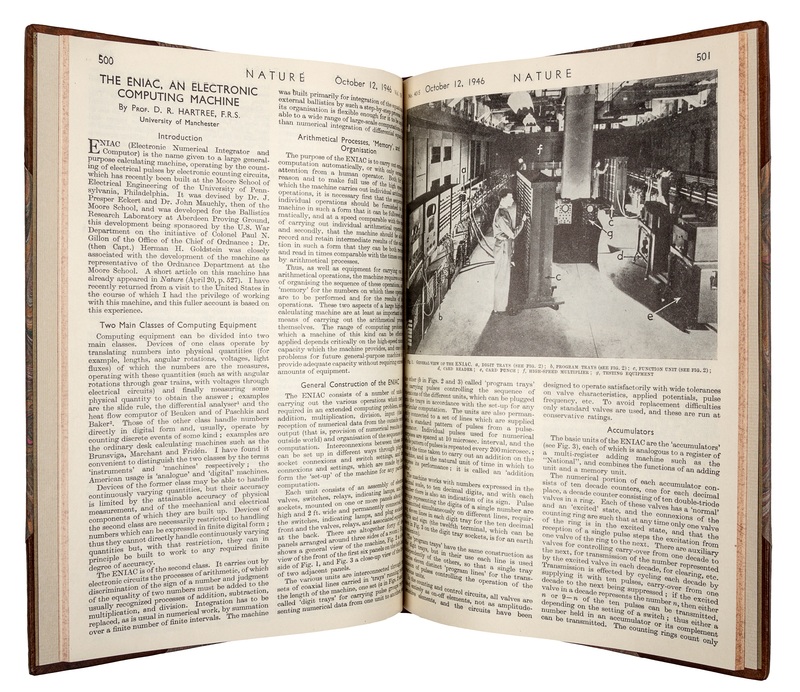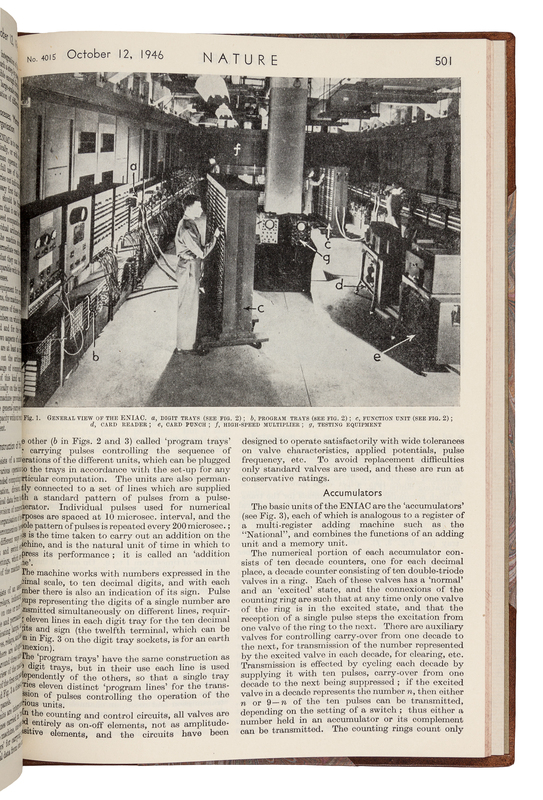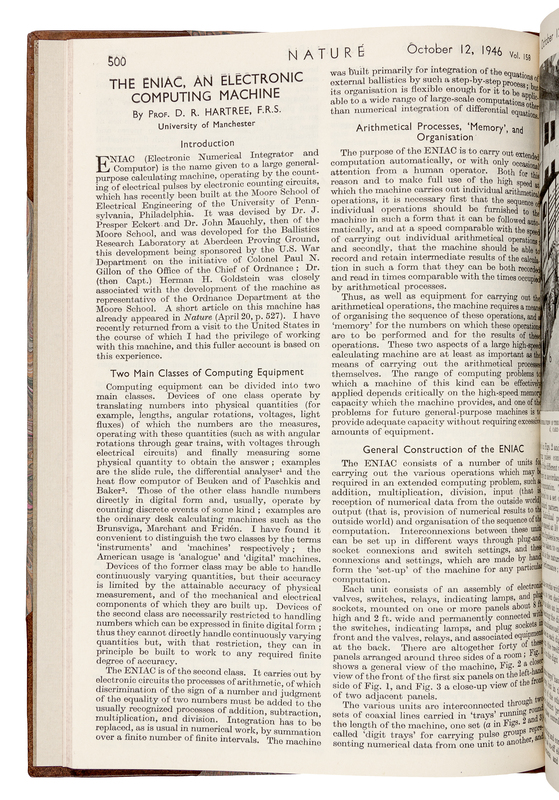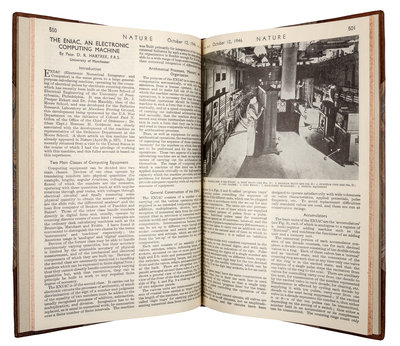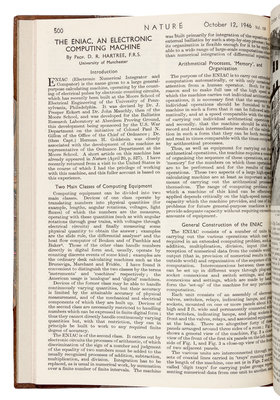Condition Report
Contact Information
Auction Specialist
Lot 36
HARTREE, Douglas R. (1897-1958). “The ENIAC, an Electronic Calculating Machine.” In: Nature, Vol. 157, No. 3990, p. 527. London: Macmillan and Co., April 20, 1946. – HARTREE. “The ENIAC, An Electronic Computing Machine.” In: Nature, Vol. 158, No. 4015, pp. 500-506. London: Macmillan and Co., October 12, 1946.
Sale 714 - Library of a Midwestern Collector
Nov 5, 2019
10:00AM CT
Live / Chicago
Own a similar item?
Estimate
$1,000 -
1,500
Lot Description
[ENIAC]. HARTREE, Douglas R. (1897-1958). “The ENIAC, an Electronic Calculating Machine.” In: Nature, Vol. 157, No. 3990, p. 527. London: Macmillan and Co., April 20, 1946. – HARTREE. “The ENIAC, An Electronic Computing Machine.” In: Nature, Vol. 158, No. 4015, pp. 500-506. London: Macmillan and Co., October 12, 1946.
Together 2 works in one volume, 8vo. With 4 plates (one folding). (Occasional light foxing.) Modern half calf. Provenance: The Drackett Co. (received stamp on volume title dated “Sep 25 1946”).
THE FIRST WIDELY PUBLISHED ANNOUNCEMENT AND DESCRIPTION OF THE ENIAC--THE FIRST ELECTRONIC DIGITAL COMPUTER. The brief first paper begins: “The news has recently been released of a major advance in the development of equipment for extensive numerical calculations, in the successful completion of a large calculating machine based on the use of electronic counting circuits…”. The ENIAC was first unveiled to the public on February 14, 1946 at the Moore School of the University of Pennsylvania, but a published announcement and detailed description of the new computer was not issued until the appearance of these two articles in Nature.
“The ENIAC, developed during World War II by Pres Eckert and John Mauchly at the University of Pennsylvania's Moore School of Engineering, was the world's first large-scale general purpose digital computer. Hartree, a British mathematician, first learned of ENIAC in 1945, when he saw the as-yet uncompleted machine during a visit to the Moore School. In 1946 he returned to the Moore School as a participant in the Moore School lectures, advising on nonmilitary uses of ENIAC; during this time he became the first Englishman to work with the machine. He was the first to bring news of ENIAC to Great Britain, publishing the above article in Nature shortly after his return from the United States. Although he himself invented no new calculating devices, Hartree's promotion of electronic digital calculating methods in scientific computation helped to stimulate the development of more powerful computers like Cambridge University's EDSAC” (Norman). Origins of Cyberspace 648 (second paper).
